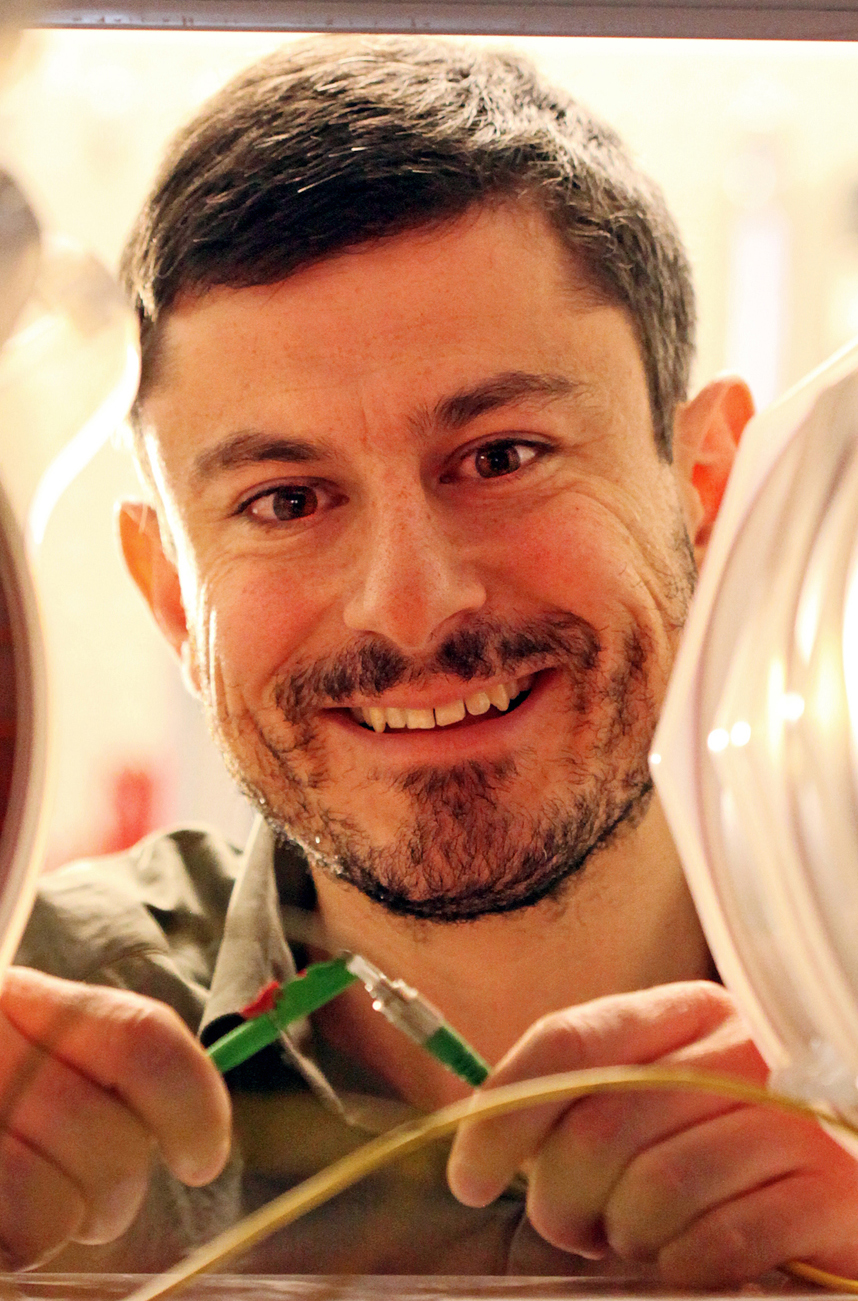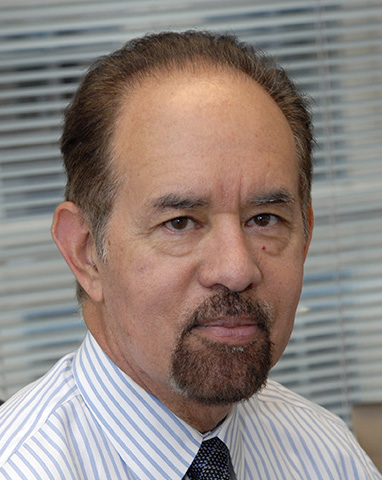Machine Learning Techniques for Next-generation Optical Communication Systems
Darko Zibar, PhD
Technical University of Denmark
Lyngby, Denmark
Abstract
Recently, there has been an increasing amount of research focused on the application of machine learning techniques to optical communication and photonics. These applications have varied from component characterization, ultra-sensitive optical phase detection, performance prediction and system optimization, and more recently, within the field of quantum communication and optical fibre sensing. In this talk, a brief overview of the application of machine learning in optical communication will be given. Then, techniques from Bayesian machine learning and digital coherent detection will be presented on how to perform ultra-sensitive, and optimum in a statistical sense, detection of optical amplitude and phase, which later can be used to perform relative intensity and frequency laser noise characterization. Finally, a novel concept on information transmission over the optical fibre, by employing modulation of eigenvalues, will be presented.
Short bio
 Darko Zibar received the M.Sc. degree in telecommunication and the Ph.D. degree in optical communications from the Technical University of Denmark, in 2004 and 2007, respectively. He was a Visiting Researcher with the Optoelectronic Research Group (Prof. John E. Bowers), University of California, Santa Barbara, CA, USA, in 2006 and 2008, where he worked on coherent receivers for analog optical links. In 2009, he was a Visiting Researcher with Nokia-Siemens Networks, where he worked on clock recovery techniques for polarization multiplexed systems. He is currently Associate Professor at DTU Fotonik, Technical University of Denmark. His research efforts are currently focused on the application of machine learning methods to optical communication, ultra-sensitive amplitude and phase detection and optical fibre sensing systems. He is a recipient of Young Researcher Award by University of Erlangen-Nurnberg, in 2016, for his contributions to applications of machine learning techniques to optical technologies. He was a part of the team that won the HORIZON 2020 prize for breaking the optical transmission barriers. In 2017, he was granted European Research Council (ERC) Consolidator Grant where the focus is on the demonstration of nonlinear-distortion free optical communication systems by employing modulation of eigenvalues.
Darko Zibar received the M.Sc. degree in telecommunication and the Ph.D. degree in optical communications from the Technical University of Denmark, in 2004 and 2007, respectively. He was a Visiting Researcher with the Optoelectronic Research Group (Prof. John E. Bowers), University of California, Santa Barbara, CA, USA, in 2006 and 2008, where he worked on coherent receivers for analog optical links. In 2009, he was a Visiting Researcher with Nokia-Siemens Networks, where he worked on clock recovery techniques for polarization multiplexed systems. He is currently Associate Professor at DTU Fotonik, Technical University of Denmark. His research efforts are currently focused on the application of machine learning methods to optical communication, ultra-sensitive amplitude and phase detection and optical fibre sensing systems. He is a recipient of Young Researcher Award by University of Erlangen-Nurnberg, in 2016, for his contributions to applications of machine learning techniques to optical technologies. He was a part of the team that won the HORIZON 2020 prize for breaking the optical transmission barriers. In 2017, he was granted European Research Council (ERC) Consolidator Grant where the focus is on the demonstration of nonlinear-distortion free optical communication systems by employing modulation of eigenvalues.
Invited presentation for the Symposium on Advanced Educational Technologies
Ray Perez, PhD
Office of Naval Research
USA
Abstract
With the spread of global competition the United States, as well, other western industrialized nations must develop a world-class workforce. Today’s approaches in education and training must change if any nation is to be completive in the dynamic global market place. Our citizens must be proficient in mathematics interested in science, technology, engineering, mathematics, and (STEM) careers. One possible solution is the leveraging of AI technologies in education and training, specially, the augmentation of classroom teaching with intelligent tutoring technologies. Our hypothesize is that the use of AI technologies will enable us to produce a world class workforce that will be competitive in the global economy (Robelen, 2012). Numerous studies have shown that an effective way to teach is through one-on-one interactions between students and teachers (Bloom, 1984). A feasible way of achieving one-on-one instruction is by the use of advanced technologies. On such technologies is Intelligent Tutoring Systems (ITS). ITS have been showed to be effective with an effect size on average of d= ,47 This is based on several recent meta-analytics studies (Kulick & Fletcher 2012; VanLehn,2011; & Grasser,2013).
In this talk I will first provide a definition of ITS with a short history of the development of ITS. Followed by a current state- of- the- art assessment. The talk will concluded with a discussion of future challenges and how ITS technologies may evolve in the future.
Short bio
 Ray S. Perez is a senior scientist and Program Officer at the Office of Naval Research in Arlington, VA. In this capacity, he is responsible for managing ONR’s Cognitive Science of Learning Program. This program has two major interdisciplinary and highly intertwined thrusts. Specifically, he is responsible for (1) training/education research and their core technologies, and (2) individual differences research. He also served as the Service training lead for the Human Systems Community of Interest for DoD.
Ray S. Perez is a senior scientist and Program Officer at the Office of Naval Research in Arlington, VA. In this capacity, he is responsible for managing ONR’s Cognitive Science of Learning Program. This program has two major interdisciplinary and highly intertwined thrusts. Specifically, he is responsible for (1) training/education research and their core technologies, and (2) individual differences research. He also served as the Service training lead for the Human Systems Community of Interest for DoD.
The training technologies thrust include research on the use of various artificial intelligence methods and techniques to enhance the design of AI based tutors, interoperable and transportable simulations, computer games(e.g. game theory), and web-based instruction The goal of the thrust is to leverage cognitive theories of learning and teaching during their early instructional design phases. The individual differences thrusts consist of research in perceptual (e.g., visual memory) and cognitive abilities (e.g., working memory).
Dr. Perez is conducting research in the development of new theories and methods for the assessment of human abilities. Its goal is to provide the underlying science and technology for effectiveness. Recognized as a DoD leader in learning, he was asked by the Chief of Naval Research to be the lead program manager for ONR’s STEM grand challenge. This program’s primary objective is to develop the next generation of Intelligent tutors in four STEM areas that are faster, cheaper, and better (e.g., achieve a 2 sigma improvement in performance).Another objective of this research effort was to apply what is learned in creating STEM tutors to military training.
Dr. Perez’s research in the areas of technology-based education and training spans over 30 years. Throughout his career, he has received numerous awards for his work in advanced learning technologies. He has edit six books on the use of technology in education and training. The most recent, Using Games and Simulations for Teaching and assessment: Key Issues ,published by Routledge, 2016. A completed list of his numerous book chapter, scientific journal articles, technical reports and presented scientific papers at professional meetings will be provide upon request. Prior to coming to ONR he served as program manager for the Presidential Technology Initiative Program at the Department of Defense Education Activity (DoDEA). While at DoDEA he was the Director of the K‒12 program within the Advanced Distribute Learning Initiative, sponsored by the Office of the Secretary of Defense, Readiness and Training. Earlier, he was principal scientist in Simulation and Advanced Instructional Systems, at the U.S. Army Research Institute for the Social and Behavioral Sciences (ARI) and was an assistant professor, in the Department of Psychology, at California State University Dominguez Hills, California. Dr. Perez continues to serve as an educational technology expert on various review panels including the National Science Foundation (NSF), National Academy Sciences (NAS), Defense Advanced Research Agency (DARPA), and JCP-1 for Modelling and Simulation, USARMY MEDCOM USAMRMC (US). Dr. Perez received a Doctorate and Master’s degree Cognitive Psychology from the University of California, Los Angeles California. Dr. Perez was the co-chair of NATO Human Factors and Medicine Panel’s HFM-RTG 237 Assessment of Intelligent Tutoring Systems Technologies and opportunities.
